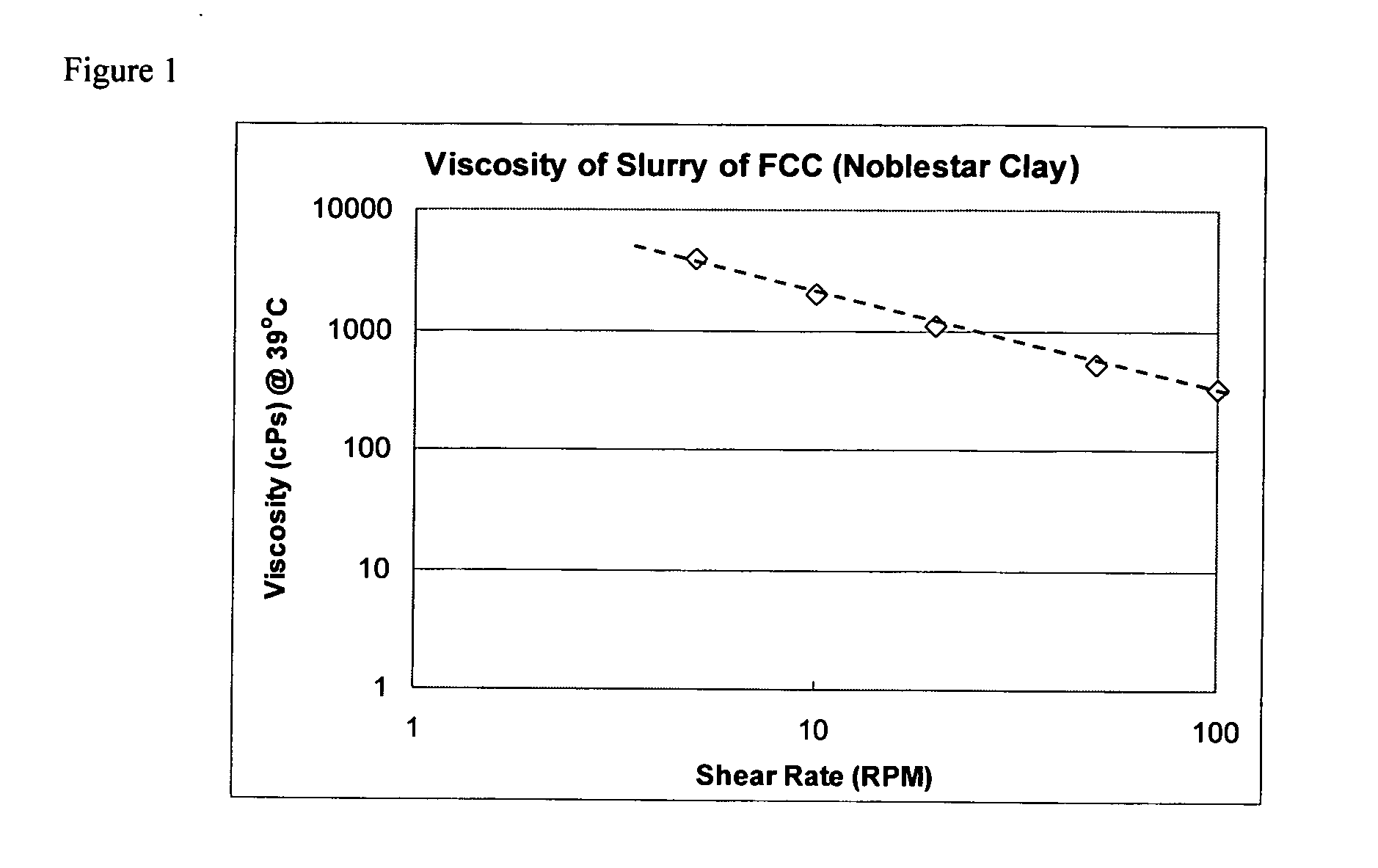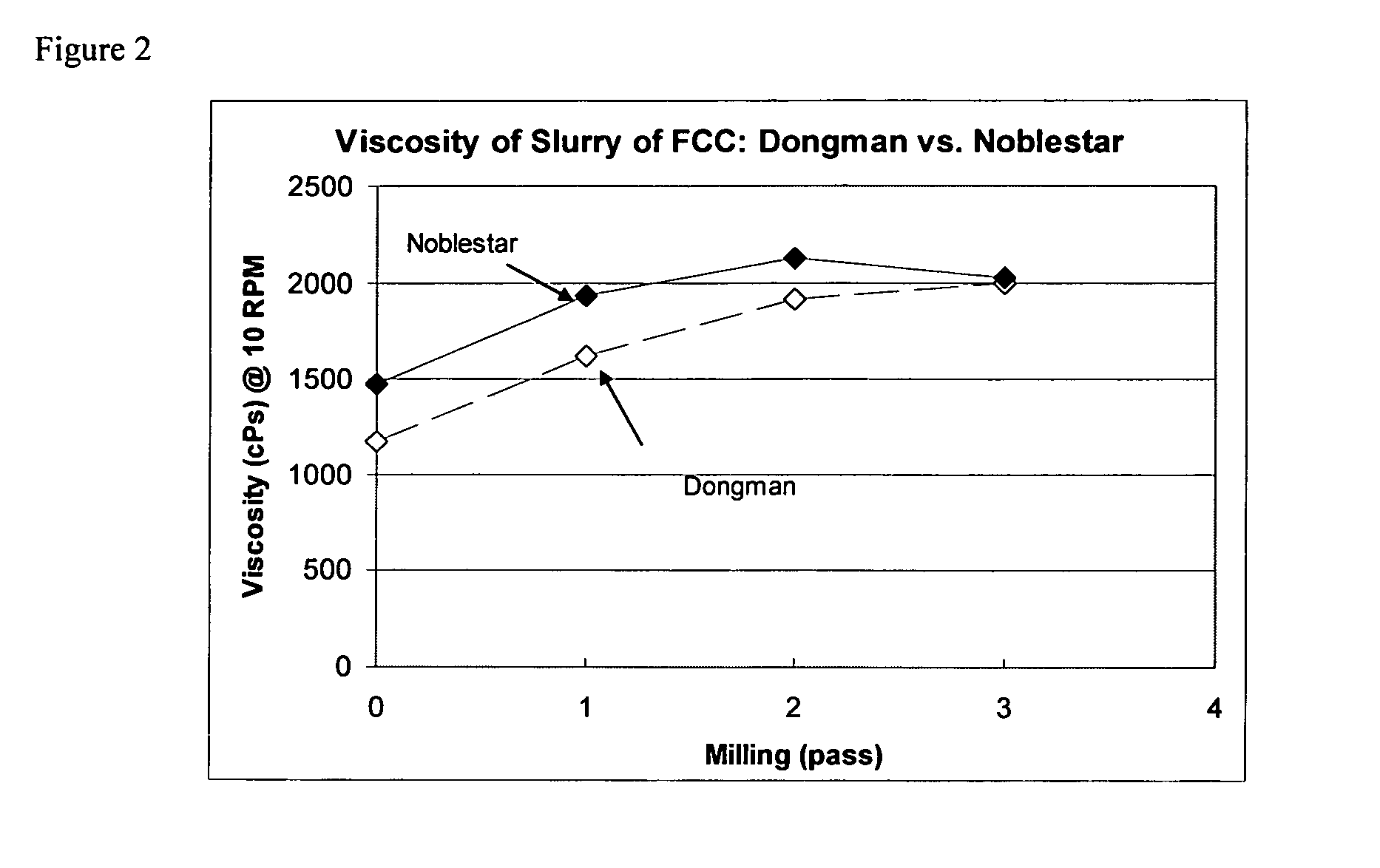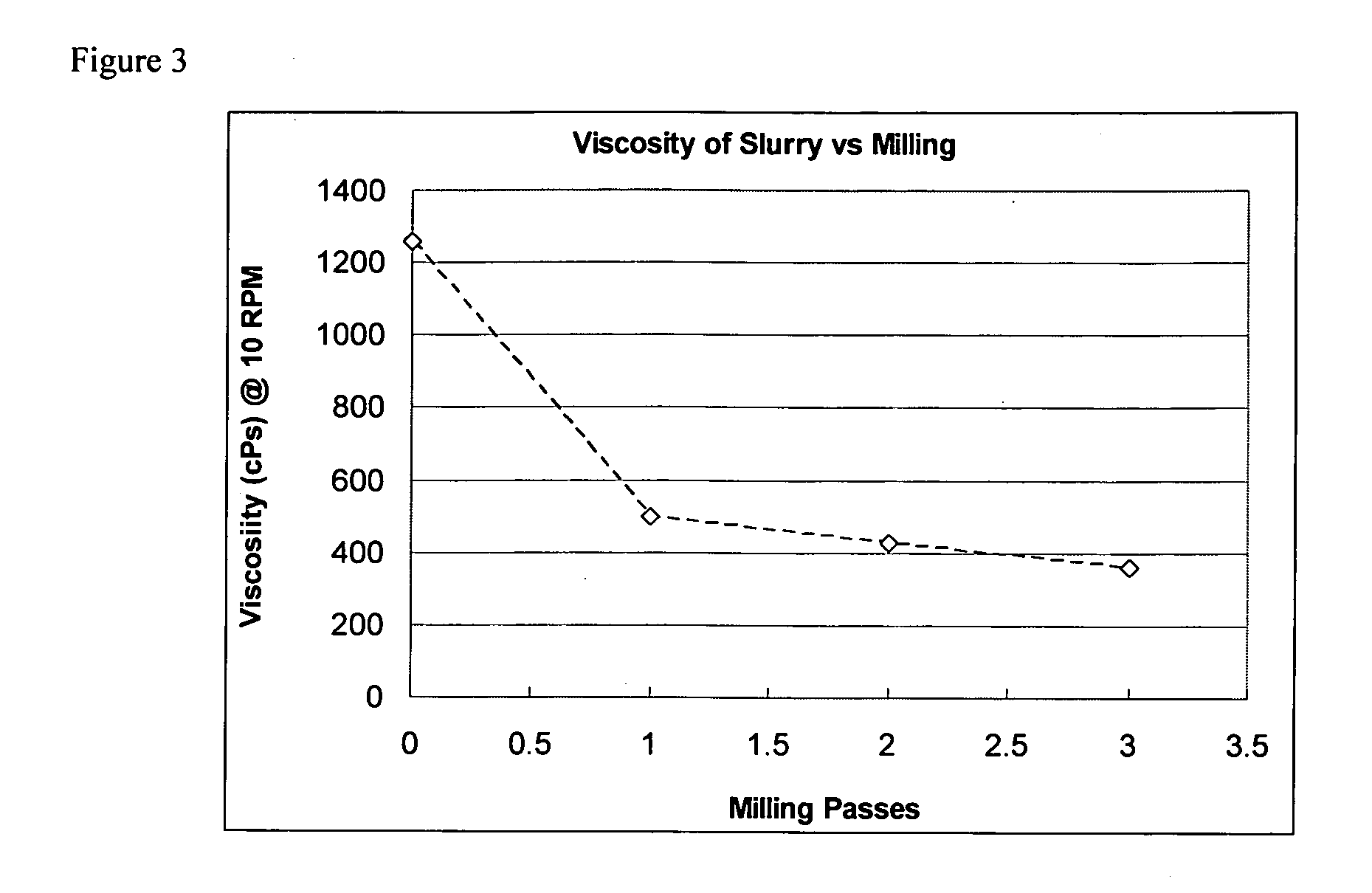High solids catalyst formulation and spry drying
a catalyst formulation and high solids technology, applied in the direction of catalyst activation/preparation, physical/chemical process catalysts, catalyst activation/preparation, etc., can solve the problems of hydrodynamic problems, less catalyst life time, and high cok
- Summary
- Abstract
- Description
- Claims
- Application Information
AI Technical Summary
Benefits of technology
Problems solved by technology
Method used
Image
Examples
example-1
Comparison
[0044]A slurry containing 35% solids was prepared by (1) adding 4.15 kilograms of USY zeolite (LOI: 7.6%) prepared by Noblestar Catalyst Corporation Ltd., Qingdao, China into 17.94 kilograms of distilled water under stirring at 200 RPM of a saw blade mixer; (2) followed by adding 5.00 kilograms of an aluminum chlorohydrate solution (LOI: 74.54%) provided by Noblestar Catalyst Corporation Ltd; (3) adding 1.97 kilograms of alumina (LOI: 2.5%) from Shandong Aluminum, Shandong, China. (4) then adding 7.40 kilograms of kaolin clay (LOI: 22.14%) from China Kaolin Clay Company, Suzhou, Jiangsu, China. The resultant formulation contains 30 wt. % of USY zeolite, 10 wt. % binder (based on alumina), 15 wt. % alumina and 45 wt. % kaolin clay. The slurry was milled using a pebble mill. The milled slurry was used for spray drying using a spray dryer from Qunli Drying Equipment Ltd., Changzhou, Jiangsu, China. Atomization was achieved using a single fluid pressure nozzle. Atomization pre...
example-2
Invention
[0045]A slurry having a solids content of 44.3 wt. % was prepared by (1) weighing 2347 grams of distilled water; (2) adding 3005 grams of concentrated aluminum chlorohydrate solution (LOI: 76.04%) obtained from Noblestar Catalyst Incorporated Ltd., Qingdao, China, under mixing using a homogenizer at 500 RPM. This slurry had a pH=2.6 measured at 29° C. (3) adding 2105 grams of LISY-2 Y zeolite having LOI of 14.5 wt. % from Noblestar Catalyst Incorporated Ltd., Qingdao, China to the slurry from step (2) whiling under mixing; the resultant slurry having a pH=3.1 measured at 31° C.; (4) adding 2343 grams of kaolin clay from China Kaolin Clay Company, Suzhou, Jiangsu, China, having LOI of 22.14% while under mixing; the resultant slurry has a pH=3.1 measured at 30° C. The slurry was mixed using a Silverson high shear mixer at 6000 RPM for 15 minutes. Upon this high shear treatment the slurry temperature was increased from 30° C. to 33° C. This slurry is called SL-2A. Viscosity me...
example 3
[0046]An amount of 2858 g of aluminochlorohydrate solution (LOI: 74.81%) from Shanghai Domen Chemical Ltd., Shanghai, China was added to 2493 gram of distilled water while under mixing. This gives a slurry having a pH of 3.1 at 30° C. To this slurry, 2105 gram of LISY-2 Y zeolite obtained from Noblestar Catalyst Corporation Ltd., was added. The zeolite was easily breakup and dispersed into the slurry having pH of 3.3 measured at 31° C. Finally, 2543 grams of kaolin clay obtained from China Kaolin Clay Company, Suzhou, Jiangsu, China, was added. This slurry before high shear treatment or milling is called SL-3. Its viscosity and pH measurement results are given in Table 2. Viscosity of the slurry was measured using a Brookfield DV-II viscometer with a #2 spindle the same as used is the same as Example 2. Slurry SL-3 was treated using a Silverson 4ART high shear mixer at 6000 RPM for 15 minutes. The high shear treated slurry is called SL-3A. Its property is presented in Table 2. The h...
PUM
| Property | Measurement | Unit |
|---|---|---|
| Temperature | aaaaa | aaaaa |
| Temperature | aaaaa | aaaaa |
| Fraction | aaaaa | aaaaa |
Abstract
Description
Claims
Application Information
 Login to View More
Login to View More - R&D
- Intellectual Property
- Life Sciences
- Materials
- Tech Scout
- Unparalleled Data Quality
- Higher Quality Content
- 60% Fewer Hallucinations
Browse by: Latest US Patents, China's latest patents, Technical Efficacy Thesaurus, Application Domain, Technology Topic, Popular Technical Reports.
© 2025 PatSnap. All rights reserved.Legal|Privacy policy|Modern Slavery Act Transparency Statement|Sitemap|About US| Contact US: help@patsnap.com



